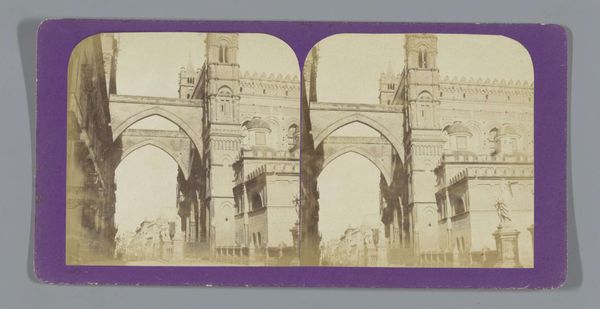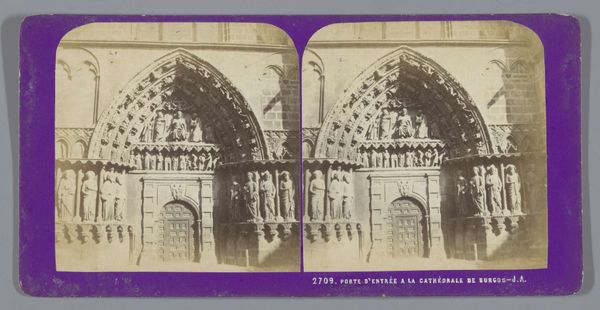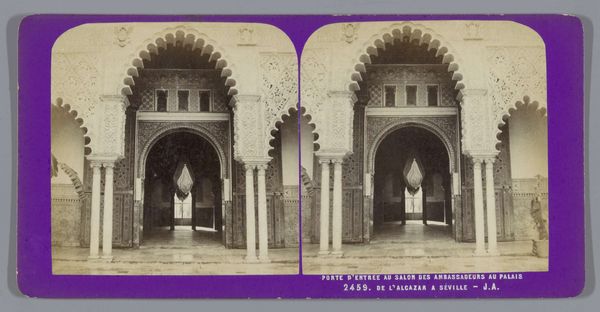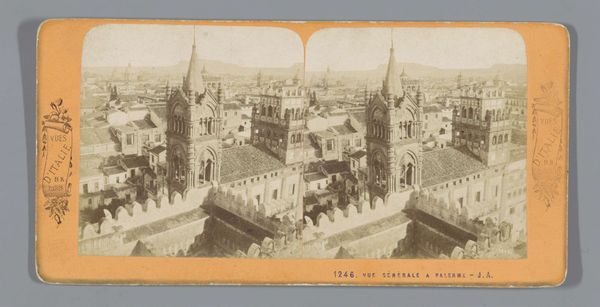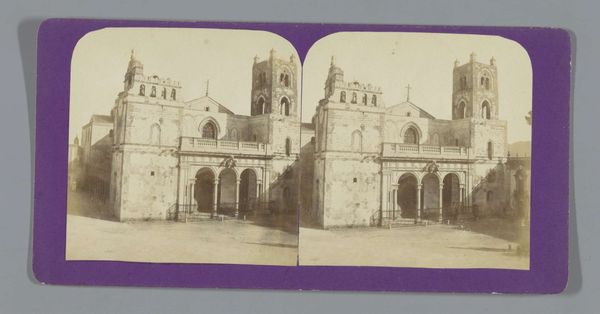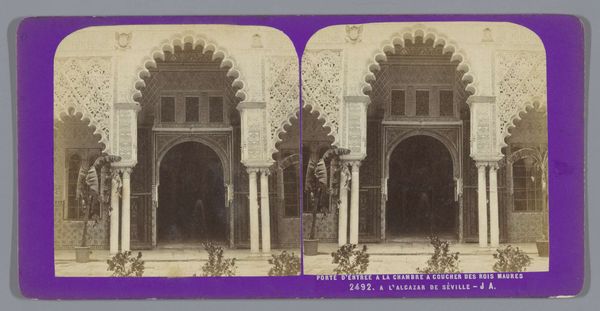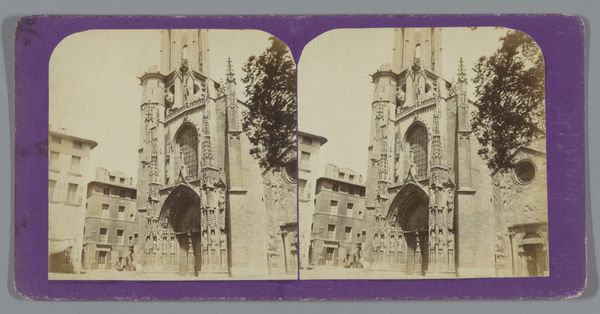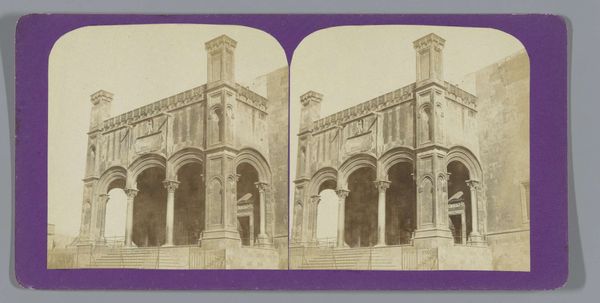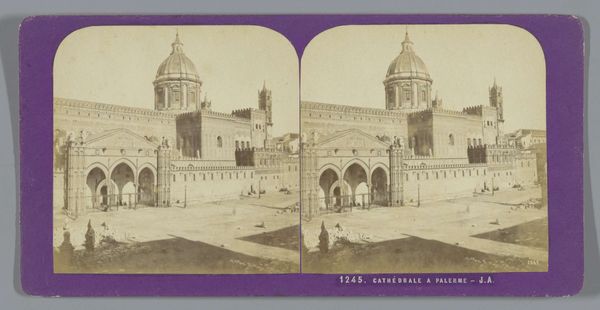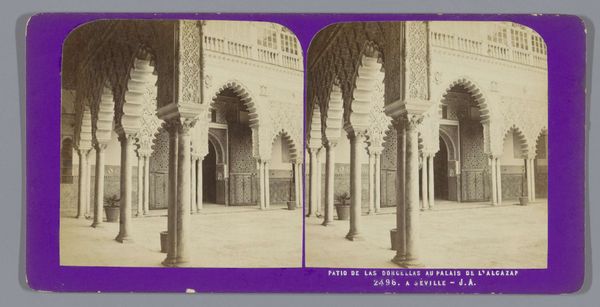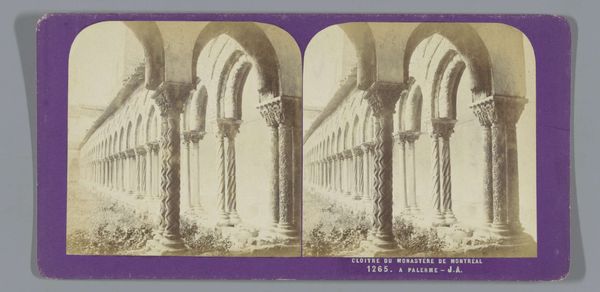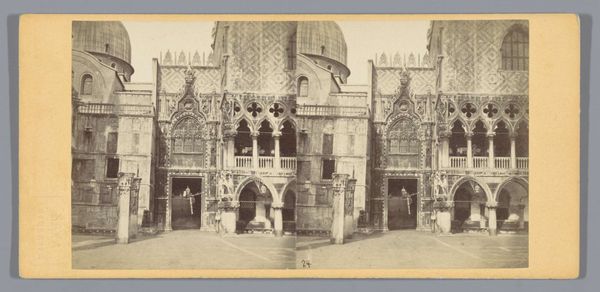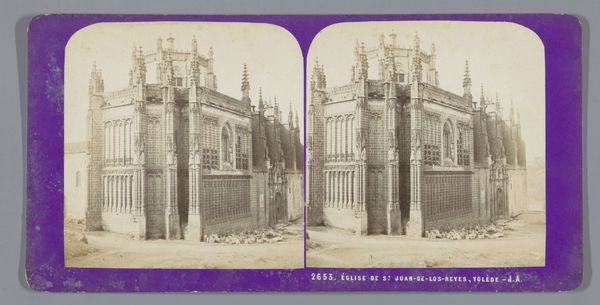
stereo, photography
#
stereo
#
photo restoration
#
photography
#
coloured pencil
#
cityscape
#
italian-renaissance
#
realism
Dimensions: height 88 mm, width 176 mm
Copyright: Rijks Museum: Open Domain
Curator: Immediately, it’s just, immense. The way the light catches on those towers, it feels less like a building and more like… a sandcastle, defying gravity with such quiet, resolute… dustiness. Editor: Indeed. What you're responding to is, of course, the Cathedral of the Assumption of Mary in Palermo, Italy. This photograph, taken sometime between 1862 and 1876 by Jean Andrieu, presents us with a glimpse into a Palermo caught between historical grandeur and burgeoning modernity. And this photograph in the stereo format amplifies it. Curator: Ah, stereo! That explains the double vision sensation – two images almost kiss in the center. Suddenly I feel I am craning my neck, tilting, looking up… making me feel I was present on location to get this wide panoramic shot, but still makes me uneasy because its point of view almost suggests the scale and the human experience being present here together with what it implies in terms of power relations. It's subtle. What a trick! Editor: The clever manipulation lies precisely there. It aims to provide viewers with an accessible piece of history, shaped according to specific tastes and assumptions. By giving viewers the feeling to travel back in time with its high towers. Also, we cannot forget this view appears shortly after the creation of Italy, so imagery of Sicily would be key for national cultural heritage building. Curator: I'm struck by that light again—almost blinding on the facade, which gives the cathedral a kind of imposing, almost spectral quality. A building in full view as a relic, a thing of the past. It's so static but the light on the people creates the only sign of presence and movement, the trace of history ongoing. A reminder it lives and breathes through those who pray and walk through the square today. Editor: It’s impossible to separate such representations from these historical factors. These images provided a crucial point of contact for audiences removed from the physical space of Palermo. Jean Andrieu created not just a snapshot, but an instrument deeply entwined with his time's politics and representational strategies. Curator: Seeing through that historical lens is truly amazing. Now, every corner and shadow is dripping with untold narratives. I thought I just saw an imposing sandcastle. Editor: It's in acknowledging the power relations and representation embedded in this photograph that its power becomes palpable. Thank you for taking that stroll.
Comments
No comments
Be the first to comment and join the conversation on the ultimate creative platform.
